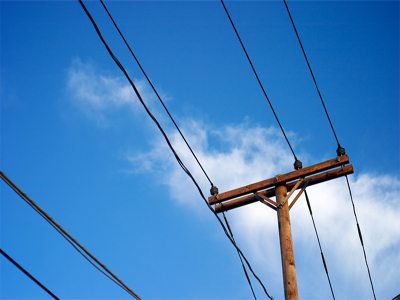Bother, said Pooh, as he realised he no longer had a honey pot to nuzzle his face in.
One electricity network has finally come clean and admitted it has, to mix metaphors, had its snout in the trough.
First, some background. As most readers are aware, networks are currently in the process of developing new tariffs to better reflect the cost of future investment. For most networks, this has meant adding a peak demand charge to existing fixed and consumption charges. This should send a price signal to consumers to reduce their peak demand — the main driver of over-investment in the grid over the past decade.
Networks won’t earn any extra revenue through this move. They are reducing consumption charges to compensate. Unfortunately they are not also reducing fixed daily charges (which in some cases have risen steeply over the past year), creating an added problem for low income and solar households.

It’s not that simple, of course. The price signal needs to be passed through by retailers, most of which appear to be sceptical (with good reason) about making tariffs more complicated for consumers.
The new tariffs will be optional over the next few years, even though they eventually need to be compulsory to work (otherwise only those who will be better off will take them up, leaving those remaining on old tariffs to pay more). And consumers with low daytime consumption but high evening peak demand, such as solar owners who use air conditioners, will be worse off unless they change their behaviour (by load shifting, installing batteries, facing solar panels west or improving building energy efficiency).
Anyway, one state is bucking this reform. Networks NSW, the clumsy conglomerate of Ausgrid, Essential and Endeavour which will fade into oblivion when Ausgrid and Endeavour are sold off next year, has decided to go back to the future by opting for declining block tariffs. Yes folks, the more you consume, the less we’ll charge you!
In a big ‘up yours’ to the Australian Energy Market Commission’s rule change on cost reflective pricing, it is trying to recover its sunk costs instead of sending a signal about reducing the need for future investment. Indeed, by stimulating more consumption without signalling the need to reduce peak demand (especially on summer evenings), if it is successful it will actually drive the need for more future infrastructure investment.
The tortured logic Networks NSW has been using to justify this move is that the metric all networks must use to base their new tariffs on — long run marginal cost, based on the cost of new infrastructure divided by the new demand required over a given period — is so low that they can’t base any tariffs on it; so we’ll base ours instead on sunk costs, thank you very much.
There are at least four problems with this argument. The most obvious is that a tariff which doesn’t encourage consumers to use less energy during times of peak demand cannot be considered cost reflective in relation to future investment.
Two, this argument fell apart when consumer advocates were finally, after several requests, given access to the networks’ LRMC calculations in October. It turned out that Ausgrid’s LRMC was zero or below, Endeavour’s was similar to other peri-urban networks ($133 per kVA),* and Essential’s was a high $316/kVA.
Yet NNSW has persisted with a uniform approach to tariffs.
Three, if you forecast out far enough, new demand will certainly emerge in at least some parts of the network, due to things like localised population growth. But NNSW has been basing its argument about low LRMC on planning horizons as short as three years. ‘Long run’ that is not. As it turns out, even Ausgrid’s LRMC gets into positive territory ($164) when they forecast out to 15 years.
Finally, there is only one reason I can think of why Ausgrid wouldn’t be able to calculate any cost for new investment until they start to plan over longer than a ten year horizon. That is if it had so massively overbuilt over the past decade that there would be little need for new infrastructure for the next decade.
What prudent business invests in capital it won’t need for the next decade, especially when demand for its core product is falling? A regulated monopoly, that’s what.
Now, hidden on page 41 of Ausgrid’s Tariff Structure Statement proposal released on Wednesday by the Australian Energy Regulator, comes this admission: Ausgrid believes that the key driver of the shortcomings of our LRMC estimation process are our current economic circumstances, which in turn reflect historical investment decisions that have resulted in a level of peak network capacity being supplied that is in excess of the level demanded by our customers.
Ausgrid and other networks are not solely responsible for these ‘historical investment decisions’. Take a bow, the NSW and Queensland governments for introducing unnecessarily stringent reliability standards to avoid the perceived political pain of blackouts. But the networks themselves consistently overestimated demand and build accordingly.
No prizes for guessing who pays for these ‘historical investment decisions’ – and no wonder Transgrid’s new owners paid more than 1.5 times the value of its assets. In any other context that would be like paying $10,000 for a car that had been valued at $6000. But for a regulated monopoly, it’s a case of ‘build it and they (consumers) will come’ — or pay, rather, through their bills for an average of thirty years for regulated assets.
Mark Byrne is energy market advocate at the Total Environment Centre.
* Energex’s LV LRMC is $130/kVA pa.










